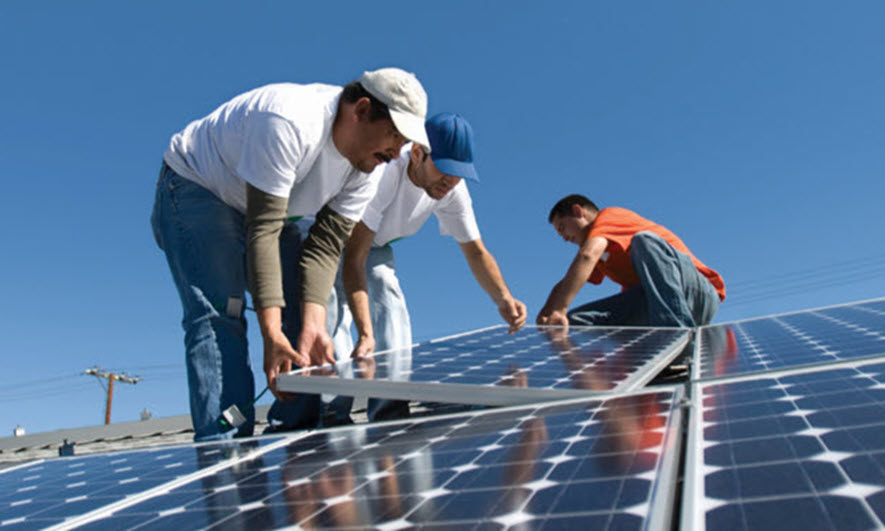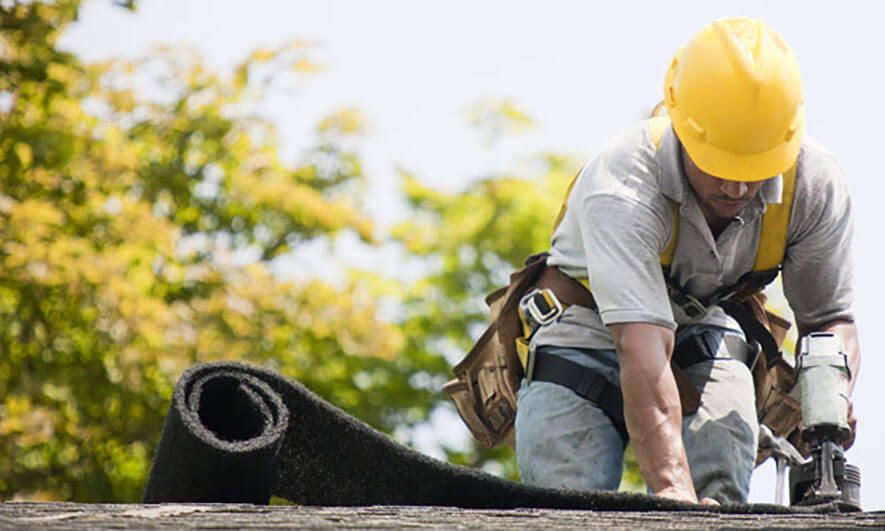As the federal government, individual states, businesses and consumers take steps to address climate change, the use of renewable energy – including roof-mounted solar panels – has steadily increased. Over the past decade, the use of solar energy solutions has grown by 33% annually. This is driven by tax-based incentives for clean energy, combined with installation costs that are down more than 50% from 10 years ago.1
As more companies execute climate-focused goals to limit greenhouse emissions, reduce their carbon-footprint and lower energy costs, the use of solar power for commercial buildings is likely to increase. Currently, it's estimated that only 3.5% of commercial buildings have rooftop solar panels, but 70% are potential targets for solar.2
We know the use of solar power can have positive impacts on the environment and generate long-term energy cost savings. However, there are several considerations and potential risks that commercial property owners and facilities managers should consider prior to investing in solar, says Tracey Greene, underwriting director for Middle and Large Commercial Real Estate at The Hartford.
“As with any business decision, it's important to evaluate the overall risk and reward of adding solar," said Greene. “Consider how the cost to install, insure and maintain solar panels compares to the energy savings and tax incentives for green energy."
But it's not just the financial calculations that property owners should consider, it's also the increased risks – including fire. From 2017 to 2018, solar related fires rose 36%, with the majority of fires affecting commercial buildings.3 “Adding a renewable energy source to a building does pose potential for an increased fire hazard," said Greene. “That's why it's important that panels are installed and maintained properly to mitigate that risk."
A U.S. Department of Energy Study projects that solar energy could account for as much as 45% of the nation's electricity supply by 2050.4
“There's definitely a commitment to renewable energy," said Lauren Kelley, product director for Middle and Large Commercial at The Hartford. “But it's important that people understand the additional risks and challenges solar can bring so they can address them."
When installing or maintaining existing solar panels to help reduce fire risk, consider the following:
Work With Reputable Manufacturers and Installers
As market demand for solar has increased, so has the number of contractors and companies supporting the industry. As of 2021, more than 255,000 Americans work in the solar energy industry, which has attracted more than $33 billion in private investment.5 However, not all installers are certified for solar, which can lead to questionable workmanship, improper installation and increased fire risk. “Solar contractors and installers who have earned their North American Board of Certified Energy Practitioners voluntary certification are considered more favorably by insurers," said Greene. As part of due diligence efforts, building owners should confirm if an installer holds a manufacturer's certified designation.
Additionally, owners should ensure that installers follow National Electric Code (NEC) guidelines. These have been adopted in all 50 states and represent the benchmark for safe electrical design, installation and inspection. “If a contractor is unfamiliar with NEC, that's a red flag," said Greene.
Use Quality Solar Panel Materials
Another factor that facilities managers should consider is the materials that solar panels are composed of, says Kenneth Travers, risk engineering technical manager for property and product at The Hartford. “Make sure the panel module frame and back sheets are not constructed of plastic, especially a foamed plastic, which can be highly combustible and lead to a rapidly developing fire,” explains Travers.
Evaluate Rooftop Quality
One frequently overlooked solar panel risk is the combustibility of a building's roof. “There are three different insurance classes of roofs. Class A roof coverings are fire rated for severe fire test exposures," said Travers, “and is the safest for solar panel installation.” Lower roof classes often have combustible insulation underneath the roof cover, which can make electrical fires worse on a rooftop panel. “Combustible insulation can easily ignite and move a rooftop fire down into the building’s structure," Travers describes.
Create a Rapid Shutdown and Rooftop Access Plan
The presence of solar panels can also create issues for firefighters, creating a risk of shock and electrocution as they’re working and trying to put out flames. That’s why Greene says it’s important for commercial building owners and managers to create written emergency plans with clear lines of responsibility for shutting down solar power. Those plans should be developed proactively in partnership with the local fire department. Since 2017, solar panels have been designed to include a rapid shutdown feature. However, older panels may require a manual shutdown process.
Additionally, adequate space must be available on the roof for firefighters to combat a fire. “They may need to cut holes and open up a roof to allow smoke and hot gases to exit a building," Greene said. “But if solar panels are placed too closely together, it may prevent them from doing this.” Typically, rooftop panels should have 4 to 6 feet of perimeter on the roof and in between panels."
Inspect Solar Connectors
Solar panels rely on cables that connect inverters and combiner boxes to transfer electrical energy. As supply chains were disrupted during the pandemic, some solar panel installers used incompatible cables and connectors that were not from the same manufacturer. “That can create a potential electrical failure point, causing a short circuit and possibly initiating a fire," Travers said. It’s recommended to update connectors as soon as possible to ensure compatible parts are used together.
Schedule Regular Maintenance and Testing
As with any system, solar panels are susceptible to wear and tear and require regular testing and maintenance. Travers recommends detailed inspections every two years, which includes powering off the entire system and testing all elements. There are a growing number of reputable national firms that building owners can hire to conduct this work.
Other Weather-Related Hazards
An increased fire hazard is just one risk of solar panels. There are additional weather-related considerations as well. “Physical damage to panels from hail, windstorms, wildfires or earthquakes is also a consideration," said Lauren Kelley, product director for Middle and Large Commercial at The Hartford. “Depending on the geographic location, additional measures can be taken to reduce the likelihood of loss from weather related events. This could include additional clearing and trimming of trees around the building or installing special guards to protect the panels during a weather event.”
Despite its potential risks, implementation of renewable solar power is expected to grow in popularity. Overall, the adoption of solar energy can provide opportunities for businesses, but it is important to understand the additional risks and challenges associated.
1,5 Solar Energy Industries Associate, “Solar Industry Research Data”
2 Colite Technologies, “Overcoming Barriers to Growth in the Commercial Solar Market”
3 Clean Energy Associates, “Understanding PV Fire Risk: Is Your Commercial Rooftop Safe?”
4 Energy.gov, “Solar Futures Study”
The information provided in these materials is intended to be general and advisory in nature. It shall not be considered legal advice. The Hartford does not warrant that the implementation of any view or recommendation contained herein will: (i) result in the elimination of any unsafe conditions at your business locations or with respect to your business operations; or (ii) be an appropriate legal or business practice. The Hartford assumes no responsibility for the control or correction of hazards or legal compliance with respect to your business practices, and the views and recommendations contained herein shall not constitute our undertaking, on your behalf or for the benefit of others, to determine or warrant that your business premises, locations or operations are safe or healthful, or are in compliance with any law, rule or regulation. Readers seeking to resolve specific safety, legal or business issues or concerns related to the information provided in these materials should consult their safety consultant, attorney or business advisors. All information and representations contained herein are as of June 2023.







